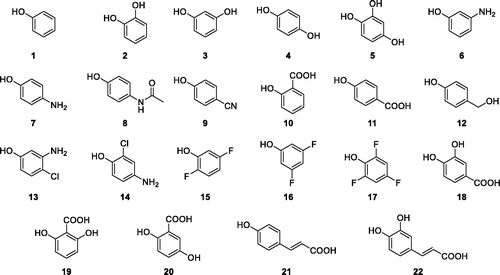Figures & data
Table 1. Kinetic parameters for the CO2 hydration reaction catalysed by the human cytosolic isozymes hCA I and II (α-class CAs), TweCAδ and PfCA measured at 20 °CCitation14,Citation18.
Table 2. Inhibition data of TweCAδ and PfCA with phenols 1–22 and the standard sulphonamide inhibitor acetazolamide (AAZ) by a stopped flow CO2 hydrase assayCitation27.
Table 3. Selectivity index (SI) for target CA over the off-target hCA I and II.


